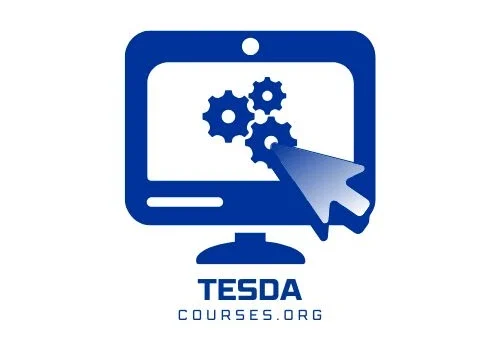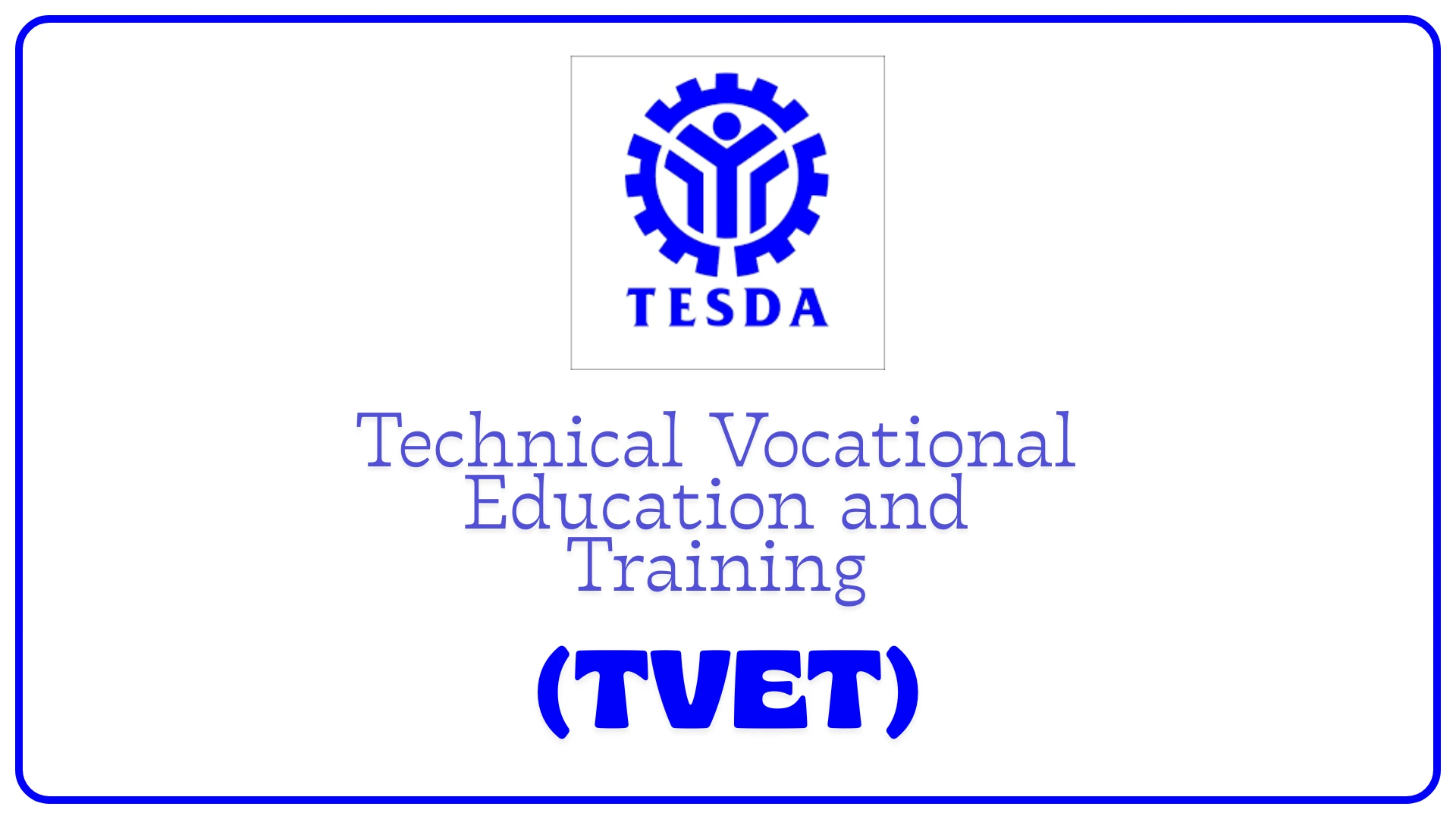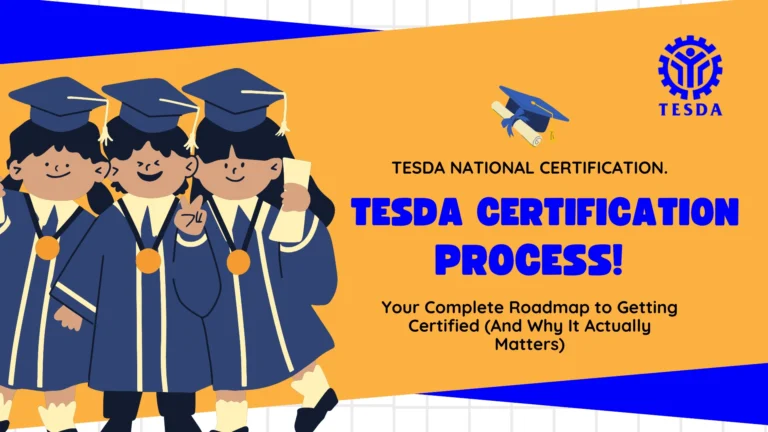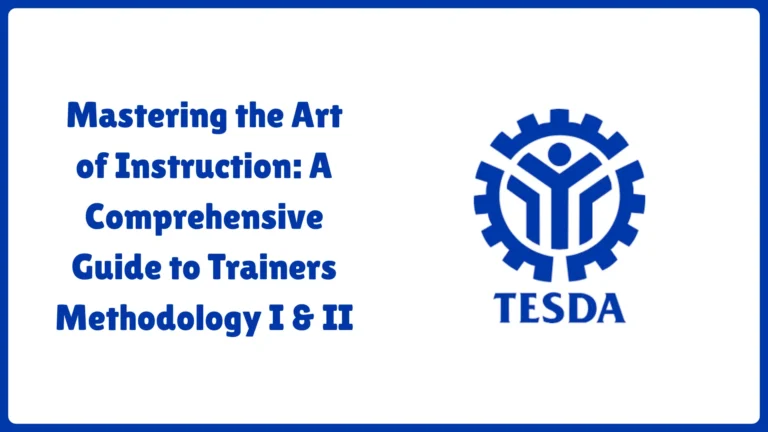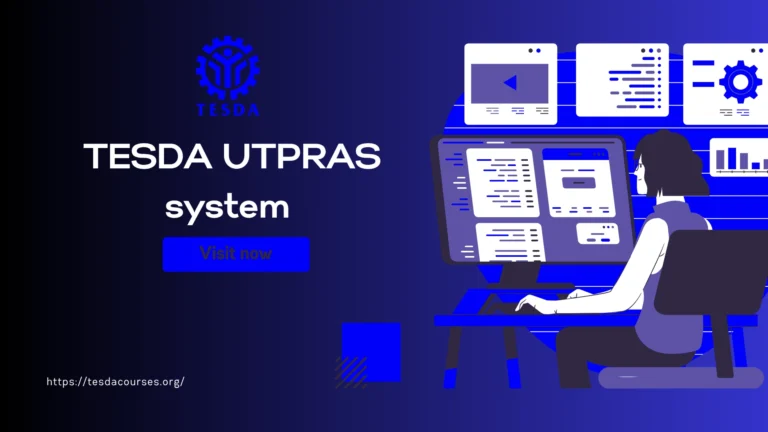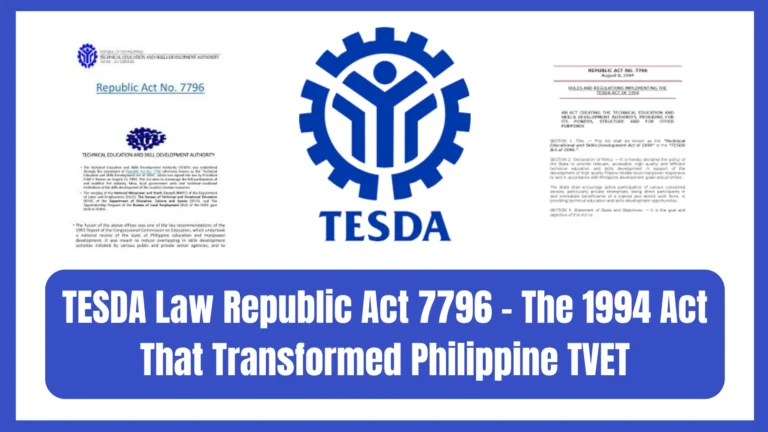Technical Vocational Education and Training (TVET): The Smart Alternative Nobody Told You About
Let me tell you about two friends who graduated high school together. Sarah went to university for four years, graduated with a business degree and PHP 500,000 in student loans. Mark enrolled in a TVET program for six months, learned welding, and landed a job in Singapore earning three times what Sarah makes—with zero debt.
Five years later? Sarah’s still paying off loans. Mark owns property and is considering early retirement.
That’s the power of Technical Vocational Education and Training (TVET).
In a world that’s been obsessed with university degrees for decades, TVET is the reality check we desperately needed. While everyone’s been told “college or bust,” smart people have been quietly building successful careers through skilled trades and technical training. And now? The secret’s out.
Whether you’re an international student exploring education options in the Philippines or someone rethinking the traditional four-year degree path, understanding TVET could be the most important career decision you make.
Let’s break down everything you need to know.
What Is TVET? The Real Definition
Here’s the TVET Definition without the bureaucratic nonsense:
Technical Vocational Education and Training (TVET) is education focused on teaching practical skills for specific jobs or trades. Unlike traditional academic education that prioritizes theory and general knowledge, TVET is all about hands-on, job-ready skills.
Think of it this way:
- Traditional education asks: “What should you know?”
- TVET asks: “What can you do?”
It’s the difference between studying the physics of combustion and actually being able to fix an engine. Both have value, but TVET gets you employed faster.
TVET includes:
- Apprenticeships
- On-the-job training
- Technical courses
- Skills certification programs
- Vocational diplomas
- Trade schools
The goal? Transform you from “I’m interested in this field” to “I’m competent and certified in this field” in the shortest time possible.
TVET vs Vocational Education: What’s the Difference?
You’ve probably heard both terms. Here’s the TVET vs Vocational Education breakdown:
Traditional Vocational Education:
- Classroom-focused
- Often school-based
- Theory-heavy with some practice
- General skills teaching
Modern TVET:
- Industry-partnership approach
- Workplace-integrated
- Practice-heavy with essential theory
- Specific competency development
- Assessment-based certification
- Continuous skills updating
Essentially, TVET is vocational education evolved for the modern workforce. It’s more responsive, more practical, and more directly connected to actual employment needs.
Why TVET Training Benefits Are Game-Changing
Let’s talk about the TVET Training Benefits that nobody mentions in career counseling:
1. Speed to Employment
Traditional degree: 4-6 years TVET program: 3 months to 2 years
You’re earning money while your university friends are still in lectures. That’s not just time saved—that’s income gained and debt avoided.
2. Real Skills, Not Theoretical Knowledge
You learn by doing, not by memorizing. When you complete a TVET program, you can actually perform the job. No “entry-level position requiring 5 years experience” paradox.
3. Lower Cost, Higher ROI
Average university degree cost: PHP 200,000-1,000,000+ Average TVET program cost: PHP 5,000-50,000 (often free with scholarships)
The return on investment? You break even in months, not decades.
4. Industry-Relevant Training
TVET curriculum is developed with industry input. You’re learning what employers actually need, not what academics think you should know.
5. Flexibility and Accessibility
Many TVET courses online and TVET online courses options exist. Study while working. Learn at your pace. Life doesn’t have to stop for education.
6. International Opportunities
TVET certification is recognized globally. Countries desperate for skilled workers actively recruit TVET graduates. Hello, immigration fast-track.
7. Entrepreneurship Ready
Learn to cut hair? Open a salon. Master electrical work? Start your contracting business. TVET skills translate directly to business opportunities.
TVET Programs: What’s Available?
The range of TVET programs and TVET courses is massive. Here’s a breakdown:
Construction and Trades
- Carpentry
- Plumbing
- Electrical installation
- Welding
- Masonry
- HVAC technician
Information Technology
- Computer systems servicing
- Web development
- Animation
- Cybersecurity basics
- Network administration
Healthcare and Wellness
- Caregiving
- Massage therapy
- Dental assistant
- Medical transcription
- Pharmacy assistant
Hospitality and Tourism
- Commercial cooking
- Food and beverage service
- Housekeeping
- Tour guiding
- Hotel operations
Automotive
- Automotive servicing
- Motorcycle repair
- Diesel engine maintenance
- Auto body repair
Beauty and Wellness
- Hairdressing
- Beauty care
- Spa therapy
- Makeup artistry
Agriculture
- Organic agriculture
- Agricultural crop production
- Livestock production
- Agricultural machinery operation
Business and Services
- Bookkeeping
- Contact center services
- Events management
- Dressmaking
- Food processing
The TVET training program list keeps growing as industries evolve.
TVET Philippines: The Local Landscape
TVET Philippines is managed primarily by TESDA (Technical Education and Skills Development Authority). The system is surprisingly robust.
Why TVET in the Philippines Makes Sense
1. Government Support The Philippine government heavily invests in TVET. Why? Skills gap. The economy needs skilled workers more than it needs another liberal arts graduate.
2. International Alignment Many TVET programs align with international standards, making Filipino TVET graduates globally competitive.
3. Scholarship Availability TVET scholarships are abundant. We’re talking free training, free materials, sometimes even allowances.
4. Strategic Focus TVET Philippines focuses on high-demand occupations. You’re training for jobs that actually exist.
Top TVET Institutes in Philippines
TVET institutes in Philippines include:
- TESDA training centers (nationwide)
- Technical schools and colleges
- Industry training centers
- Private TVET providers
- Dual training system partners
Check the TVET institute list on TESDA’s website for accredited providers.
TVET Scholarships: Free Training Opportunities
Here’s the beautiful part: TVET scholarships can cover everything.
Major Scholarship Programs
1. TWSP (Training for Work Scholarship Program)
- Covers training fees
- Provides assessment fees
- Offers starter toolkits
- Available for most TVET courses
2. STEP (Special Training for Employment Program)
- Targets disadvantaged youth
- Includes employability skills training
- Provides job placement assistance
3. Private Scholarship Programs
- Company-sponsored training
- Industry association scholarships
- NGO-funded programs
- International donor scholarships
How to Apply for TVET Scholarships
Application Process:
- Check eligibility requirements
- Gather required documents
- Submit application at TESDA or provider
- Wait for assessment and approval
- Enroll in your chosen course
TVET funding opportunities and TVET funding aren’t just for the economically disadvantaged. Many programs are open to anyone committed to completing training.
Finding TVET Training Centers
Looking for TVET training centers or TVET training centers near me?
Search Methods
Online:
- TESDA website (Philippines)
- Google Maps for local centers
- Social media groups and reviews
Offline:
- Visit provincial TESDA offices
- Ask at local government employment offices
- Check with industry associations
- Visit training centers directly
Choosing the Right Center
Evaluation Criteria:
- Accreditation status
- Pass rates in competency assessment
- Trainer qualifications
- Equipment and facilities quality
- Job placement track record
- Graduate testimonials
- TVET program certification recognition
Don’t just pick the nearest one. Quality matters.
TVET Registration and Enrollment
TVET registration is typically straightforward:
Basic Requirements
- High school diploma or equivalent
- Valid ID
- Birth certificate
- Medical certificate (for some programs)
- Passport photos
- Age requirement (usually 18+, some 15-17 with consent)
TVET Online Enrollment
Many institutions now offer TVET online enrollment:
- Browse available courses
- Submit documents digitally
- Schedule assessments online
- Track progress through portals
The pandemic accelerated digital transformation in TVET. Take advantage of it.
TVET Courses Online: Learning Remotely
TVET courses online and TVET online courses have exploded in popularity.
What Works Online
Well-suited for online delivery:
- Bookkeeping and accounting
- Computer-based skills
- Graphic design
- Digital marketing
- Programming basics
- Language services
- Virtual assistance
Requires blended approach:
- Healthcare services
- Beauty and wellness
- Construction trades
- Automotive services
- Culinary arts
Most programs now use blended learning—theory online, practicals in-person.
Top TVET Online Courses Platforms
- TESDA online programs (Philippines)
- Coursera (international partnerships)
- LinkedIn Learning (skill certifications)
- Industry-specific platforms
- Open universities offering TVET
TVET Assessment and Certification
The TVET assessment process proves you’re competent.
Assessment Types
Knowledge Assessment:
- Written exams
- Oral questioning
- Theory tests
Performance Assessment:
- Practical demonstrations
- Real-world task completion
- Portfolio review
TVET skills certification requires passing both components in most programs.
TVET Program Certification
Upon successful assessment, you receive TVET program certification:
- National certificates (like TESDA NC)
- Diplomas
- Trade licenses
- Industry-recognized credentials
These aren’t participation trophies. They’re proof of competence that employers trust.
TVET Job Opportunities: Real Career Prospects
Let’s address the TVET job opportunities question with honesty:
High-Demand TVET Careers
| Field | Average Entry Salary (PHP/month) | International Demand |
|---|---|---|
| Welding | 18,000-30,000 (PH) / Much higher abroad | Very High |
| Caregiving | 15,000-25,000 (PH) / 100,000+ abroad | Extremely High |
| IT Services | 20,000-40,000 | High |
| Construction Trades | 18,000-35,000 | High |
| Culinary Arts | 15,000-30,000 | Moderate to High |
| Automotive | 16,000-28,000 | Moderate |
These are starting salaries. With experience, earnings double or triple.
TVET Labor Market Trends
The TVET labor market is favorable because:
- Aging workforce in developed countries
- Skills shortages in technical fields
- Growing economies needing infrastructure
- Service industry expansion
- Technology requiring new technical skills
TVET employment trends show sustained demand for the next decade minimum.
TVET for Youth: Starting Early
TVET for youth programs target 15-24 year olds, providing:
- Early skills development
- School-to-work transition support
- Apprenticeship opportunities
- Career guidance
- Livelihood training
Starting TVET young doesn’t mean giving up on education. Many combine TVET with higher education or pursue specialized training after gaining work experience.
TVET Career Guidance: Making the Right Choice
Good TVET career guidance asks the right questions:
Assessment Questions:
- What interests you genuinely?
- What are your physical capabilities?
- What’s your learning style?
- What’s your end goal—employment or entrepreneurship?
- Are you willing to work abroad?
- Can you handle the training duration and intensity?
- What’s your financial situation?
TVET career guidance services are available through:
- TESDA offices
- Employment service offices
- Career counseling centers
- TVET providers
- Online assessment tools
Don’t choose randomly. Get proper guidance.
TESDA Courses for Abroad: The Ultimate Guide to In-Demand NC II & NC III Certifications
TVET Accreditation: Quality Assurance
TVET accreditation ensures quality. In the Philippines, TESDA handles TVET centers accreditation.
Why Accreditation Matters
For Students:
- Quality assurance
- Valid certifications
- Scholarship eligibility
- Job market recognition
For Providers:
- Credibility and trust
- Government support
- Student enrollment
- Partnership opportunities
Only attend accredited programs. Non-accredited training wastes time and money.
TVET Curriculum Development: What You’ll Learn
TVET curriculum and TVET curriculum development focus on:
Competency-Based Design:
- Industry-validated standards
- Measurable outcomes
- Practical application
- Assessment criteria
- Flexible delivery
Core Components:
- Technical skills
- Safety procedures
- Industry standards
- Soft skills (communication, teamwork)
- Entrepreneurship basics
- Workplace ethics
The curriculum isn’t arbitrary. It’s based on what employers actually need.
TVET Policy and Framework
TVET policy at national and international levels drives development.
Key TVET Policy Framework Elements
1. Access and Equity Ensuring TVET is available to all, regardless of background
2. Quality Assurance Standards, accreditation, monitoring
3. Industry Partnership Connecting training with employment
4. Funding Mechanisms Government support, private investment, scholarships
5. International Alignment Meeting global standards for mobility
TVET international standards adoption helps Filipino workers compete globally.
TVET Effectiveness: Does It Work?
Let’s talk TVET effectiveness and TVET program outcomes honestly:
Success Metrics
Employment Rates:
- TVET graduates: 70-85% employed within 6 months
- Traditional graduates: 40-60% employed within 6 months
Starting Salaries:
- TVET: Often higher in technical fields
- Traditional: Starting lower, potential growth depends on field
Job Satisfaction:
- TVET: High (doing work they trained for)
- Traditional: Mixed (many work outside their field)
Time to Career Start:
- TVET: 6 months to 2 years
- Traditional: 4-6 years minimum
TVET Training Programs Evaluation
TVET program assessment considers:
- Graduate employment rates
- Employer satisfaction
- Skills match to job requirements
- Graduate earnings
- Business start-up rates
The data consistently shows TVET works—if you choose the right program and complete it properly.
The Ultimate Guide to TESDA Training Centers, Courses, and Contact Information Nationwide
TVET Program Challenges: The Real Issues
Let’s be honest about TVET program challenges:
Stigma Problem: Society still views TVET as “lesser” than university degrees. This is changing but slowly.
Quality Variance: Not all TVET providers are equal. Due diligence is essential.
Equipment Costs: Good TVET requires good equipment. Some centers cut corners.
Industry Pace: Technology evolves faster than curriculum updates. Continuous learning is necessary.
Career Ceiling: Some trades have earnings limits without entrepreneurship or specialization.
These challenges exist but aren’t insurmountable. Knowing them helps you navigate smarter.
TVET Skills Development: Continuous Learning
TVET skills development doesn’t end with certification.
Continuous Development Strategies:
- Advanced certifications
- Specialized training
- Technology updates
- Management skills
- Business skills
- International certifications
The best TVET professionals treat their initial certification as a foundation, not a destination.
Your TVET Action Plan
Ready to pursue Technical Vocational Education and Training?
Phase 1: Research (1-2 months)
- Explore different TVET courses
- Research job market demand
- Check salary expectations
- Identify scholarship opportunities
- Visit training centers
Phase 2: Decision (1 month)
- Get career guidance
- Choose your program
- Select your training provider
- Apply for scholarships
- Gather requirements
Phase 3: Training (3 months – 2 years)
- Enroll and commit fully
- Practice extensively
- Build your network
- Document your learning
- Prepare for assessment
Phase 4: Certification (1-2 months)
- Take competency assessment
- Obtain certification
- Update your resume
- Start job hunting
Phase 5: Career Launch
- Apply your skills
- Gain experience
- Continue learning
- Build your reputation
- Consider advancement
The Ultimate Guide to TESDA Requirements: Enrollment, Certification, and Center Accreditation
The Bottom Line
Here’s what I’ve learned watching people succeed and fail in their careers: Technical Vocational Education and Training (TVET) isn’t second-best to university—it’s a different path that often leads to better outcomes faster.
Mark’s story from the beginning? That’s not an exception. It’s increasingly common. While traditional education still has its place, TVET offers something increasingly rare: a direct path from training to employment with minimal debt and maximum practical skills.
The world needs skilled workers. Countries are competing for them. Employers are desperate for them. And TVET is how you become one of them.
The question isn’t whether TVET is legitimate. The question is: why aren’t more people choosing this smart alternative?
Don’t let outdated thinking about “prestigious degrees” cost you years and money. If your goal is a good career, good income, and good life, TVET might be your fastest route there.
Choose skills. Choose practical. Choose TVET. Choose smart.
For more information on TVET programs in your area, visit your local TESDA office (Philippines), check government employment services, or search for accredited TVET providers online. Your practical education awaits.
